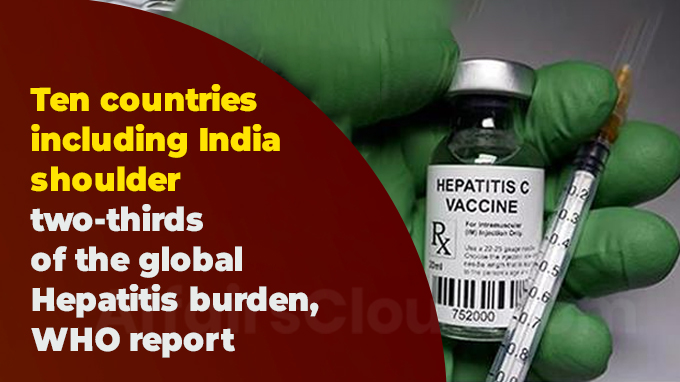
- As per it, there is alarming increase in deaths caused by viral hepatitis, making it the second leading infectious cause of death globally, after Tuberculosis (TB), claiming 1.3 million lives annually.
- This is the first consolidated WHO report on viral hepatitis epidemiology, service coverage and product access, with improved data for action.
Who Prepared the Report?
It was developed by the WHO Department of Global HIV, Hepatitis and Sexually Transmitted Infection (STI) Programmes (HHS) jointly with the Department of Health Product Policy and Standards (HPS), Department of Immunization, Vaccines and Biologicals and Department of Regulation and Prequalification.
What is in the report?
The report reveals disparities in pricing, service delivery, and funding challenges, alongside progress and gaps in diagnosis and treatment from 187 countries covering 6 WHO regions viz. African Region (AFR), the Eastern Mediterranean Region (EMR), the South-East Asia Region (SEAR), the Region of the Americas (AMR), the Western Pacific Region (WPR), and the European Region (EUR).
Highlights:
i.Viral hepatitis claims 1.3 million lives annually, with 83% attributed to hepatitis B and 17% to hepatitis C.
ii.Every day, 3,500 people are dying globally due to hepatitis B and C infections.
iii.The report estimates that in 2022, 254 million had hepatitis B and 50 million had hepatitis C.
- Half of the burden is among those aged 30-54, with 12% in children under 18. Men make up 58% of all cases.
iv.10 Countries viz. Bangladesh, China, Ethiopia, India, Indonesia, Nigeria, Pakistan, the Philippines, Russian Federation, and Vietnam collectively account for nearly two-thirds of the global burden of hepatitis B and C.
- For hepatitis B, three countries – China, India and Indonesia – represent 50% of the global burden in 2022
- For hepatitis C, six countries – China, India, Indonesia, Pakistan, Russian Federation, and United States (US)– represent 50% of the global burden
v.Despite a slight decrease in new infections, there were 2.2 million new cases in 2022, with 1.2 million hepatitis B and nearly 1 million hepatitis C infections.
iv.Only 13% of people with chronic hepatitis B and 36% with hepatitis C have been diagnosed, falling far below global targets to treat 80% of people living with chronic hepatitis B and hepatitis C by 2030.
v.Progress in diagnosis and treatment is insufficient, with hepatitis B diagnosis and treatment at 13% and 3%, respectively, and hepatitis C diagnosis and treatment at 36% and 20%, respectively.
Key Points:
i.Despite global prevention efforts, deaths from hepatitis are rising due to inadequate diagnosis and treatment.
ii.There should be Universal access to prevention by 2025, diagnosis, and treatment is crucial, particularly in the 10 countries with the highest burden and in the African Region.
iii.Many countries don’t buy affordable generic hepatitis medicines, even though they’re available. Pricing differences exist worldwide, with some countries paying more than they should, even for generic drugs or when part of licensing deals.
Recommendations for accelerating hepatitis elimination:
The report outlined a series of actions to advance a public health approach to viral hepatitis, designed to accelerate progress towards ending the epidemic by 2030.
- Expand access to testing and diagnostics.
- Shift focus from policies to implementation for equitable treatment.
- Strengthen primary care prevention efforts.
- Simplify service delivery and optimize product regulation and supply.
- Develop investment cases in priority countries and mobilize innovative financing.
- Utilize improved data for action and engage affected communities and civil society.
- Advance research for improved diagnostics and potential cures for hepatitis B.
Recent Related News:
i.WHO has recommended R21/Matrix-M, the new malaria vaccine developed by
Jenner Institute at Oxford University(the United Kingdom -UK) and Serum Institute of India (SII) Private Limited leveraging Novavax’s adjuvant technology, for the prevention of malaria in children.
ii.World Anti-Doping Agency (WADA) and WHO had inked a four- year Memorandum of Understanding (MoU) that enables experts from both global organizations to work together and exchange information concerning areas where the realms of anti-doping and public health intersect.
About World Health Organization (WHO):
Director-General– Dr Tedros Adhanom Ghebreyesus
Headquarters– Geneva, Switzerland
Establishment– 1948